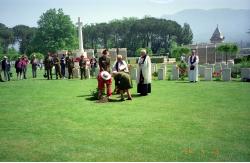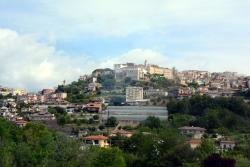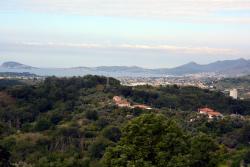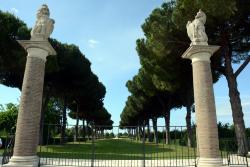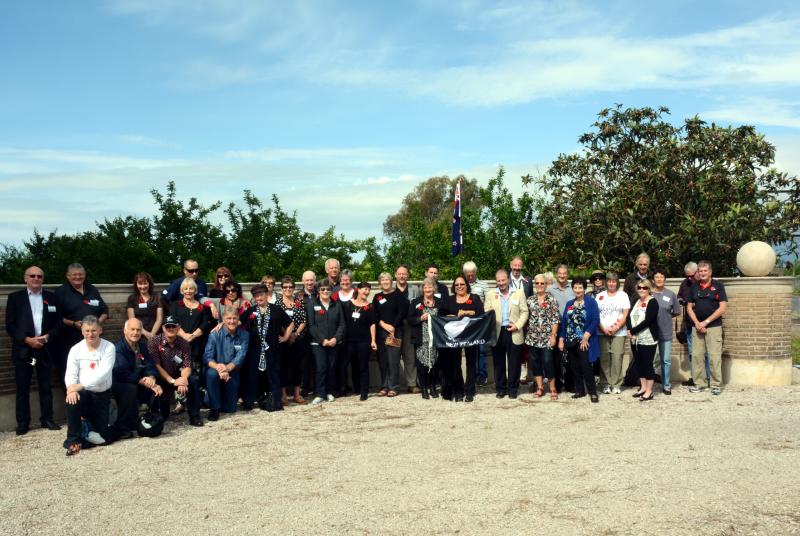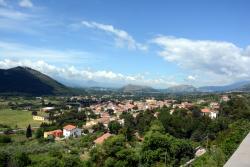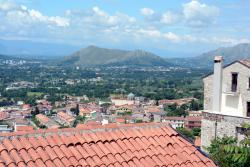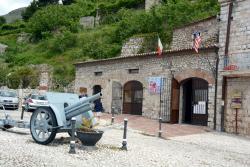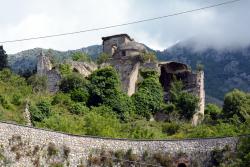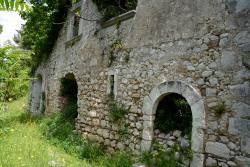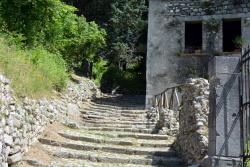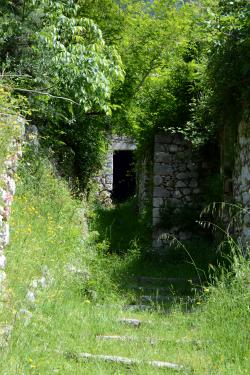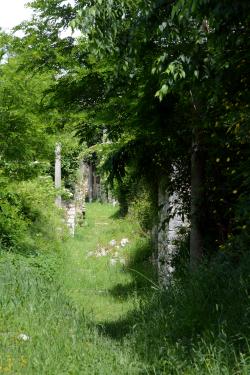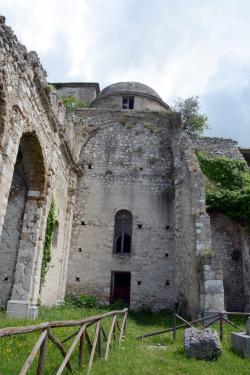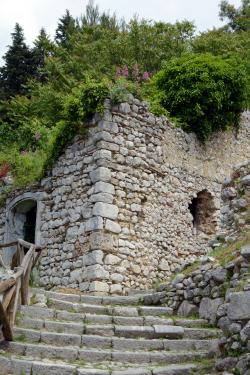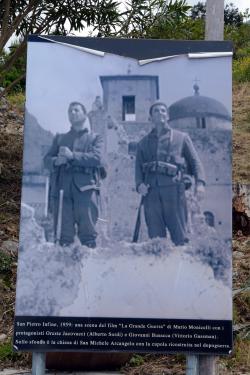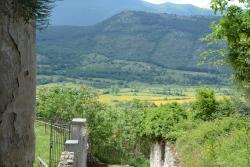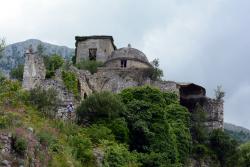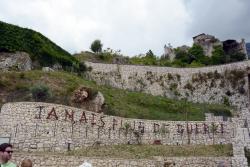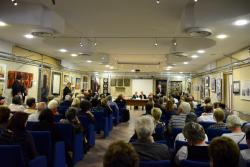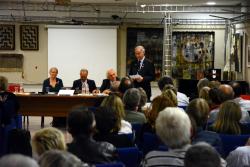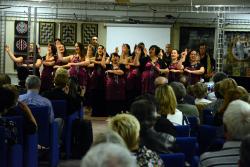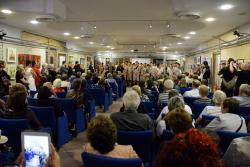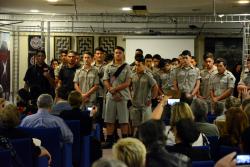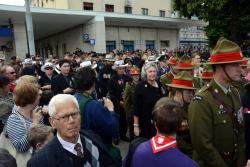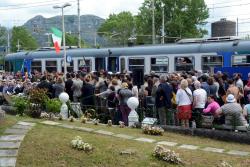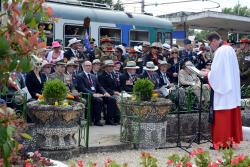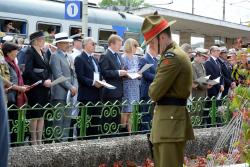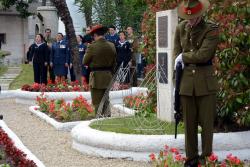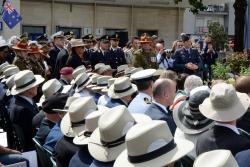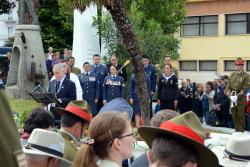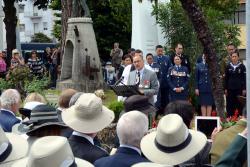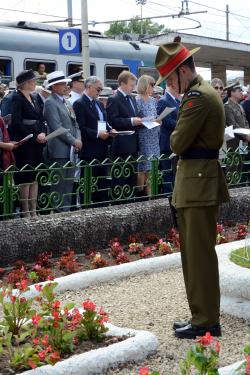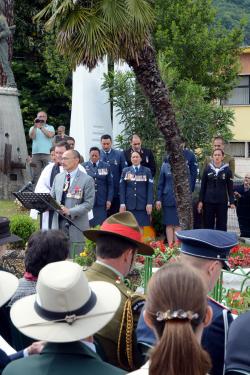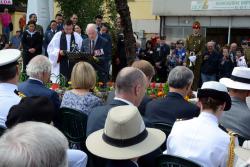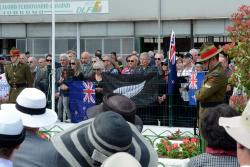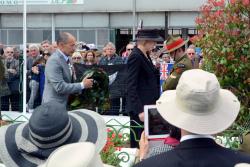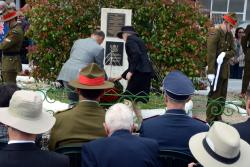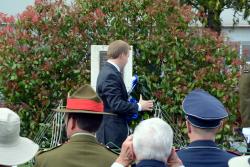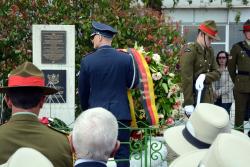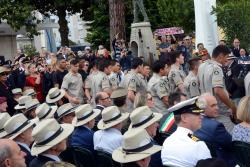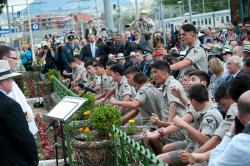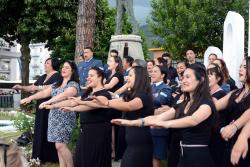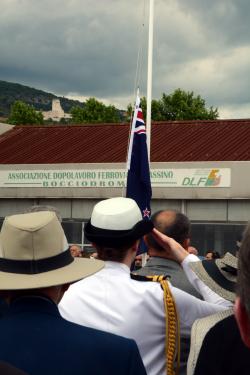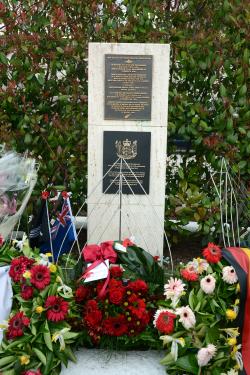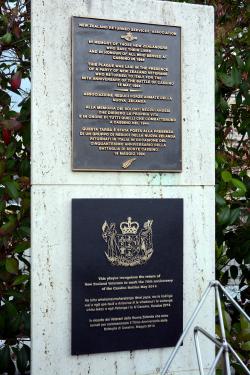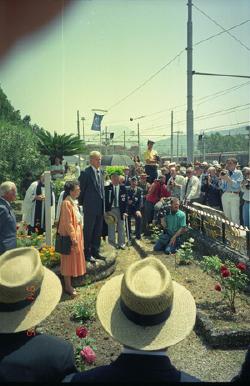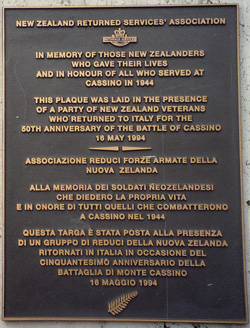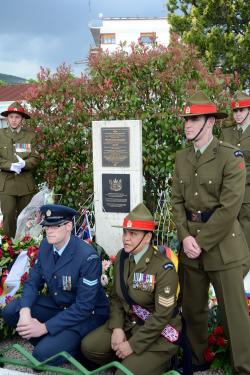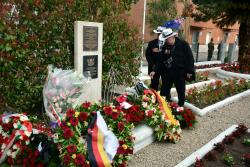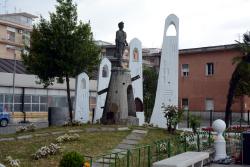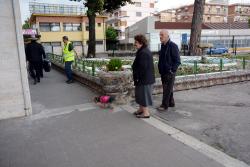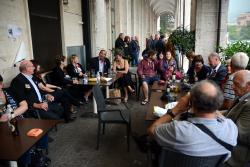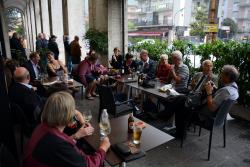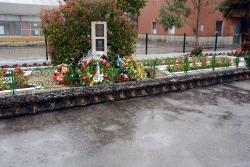Europe 14 - Day 22Cassino Commemoration Day 4: The Ruins of San Pietro Infine and an unveiling at Cassino Railway StationThis was to prove a longer day than Greg had first planned. He had intended for us to visit the Abbey of Monte Cassino this day, but at a late stage the town council decided to close the road up the hill. Several thousand Poles had descended on Cassino and they all wanted to visit the Abbey - chaos was predicted and dutifully arrived. We were glad we had not ventured into the centre of Cassino that morning. Instead we went looking for the fabled pohutukawa trees that had been planted by the veterans in 1994, then we explored the ruined village of San Pietro Infine, before entering Cassino for the opening of an art exhibition and the unveiling of another memorial at the Cassino Railway Station. Pohutukawa trees at MinturnoSo we changed our plans. Back in 1994, at the 50th Commemoration Service, two of the veteran New Zealand army nurses had planted two small Pohutukawa trees at the Cassino War Cemetery. From the photos, they would have been in the area immediately behind the Cross of Sacrifice. The trees did not thrive, being too far from the coast and not liking the winter frosts, so they were moved to the Minturno Cemetery, close to the coast. Off to Minturno we went, to see if the trees had survived: they hadn't, but we had a good morning looking for them. Except that was, until the bus would not fit under the railway line... San Pietro Infine - a tremendous battleThe 36th Texas Division - the Texas Rangers - were one of the groups given the task of capturing the town of San Pietro Infine, which blocked the 5th Army's advance down the Liri Valley towards Cassino. In the ensuing battle the town was totally destroyed. After the war it was left in ruins and a new town built lower down the hill. We visited the destroyed town, to see the damage and for the dramatic view across the valley. The fierce fighting at San Pietro Infine and the high casualties suffered led to the US Army commissioning a film of the battle by acclaimed Hollywood director John Huston. The US Army refused to show it because it was too honest in its portrayal of the high cost of battle and the difficulties faced. Today, the film can be downloaded from several sites such as this one at archive.org
Opening of the Art Exhibition at the Cassino LibraryEarly in the afternoon, we ventured into Cassino to attend the opening of the Kiwi-inspired art exhibtion at the local library - part of the 70th commemoration events. The highlight of the opening was a stirring performance by several Maori groups, as seen in the following photos. Note in the photos how modern digital photography, using phones or ipads, creates a distraction for the rest of the audience, especially when these large, and brilliantly-lit devices are held high above the head of people sitting in the front rows. As with many events in Italy, prceedings were running late, which meant that all of the performers and nearly all of the audience bolted for the door as soon as the opening was over. All were due at the next function, the unveiling of the memorial plaque at the Cassino Railway Station. I did have some sympathy for the organisers, watching around 100 people depart. We were leaving behind a very extensive and very tempting (and one would guess, very expensive) array of fresh finger food, sufficient for 150 guests but with only 20 or so left to consume it.
Ceremony at the Cassino Railway StationNearly all elements of the NZ Division saw action in Cassino. Some spearheaded the attacks, others were "lucky" to mount a holding action after the main battles had played out. It was the 28th (Maori) Battalion that suffered the most in Cassino, being ordered to attack along the railway line and to take and hold the railway station until the tanks arrived. At great cost they took the station, but the flooded valley and the tremendous destruction blocked the tanks. Eventually the Maoris were forced to abandon the station. Ever since, the Cassino Station has been a revered place. During the 50th Commemoration services in 1994, a memorial plaque was unveiled on the edge of the platform. A second plaque was to be unveiled for the 70th in 2014. The service was planned for mid-afternoon. The offical party of veterans, NZ Governor-General and others attended. It was a stirring service, the highlight for many was the singing and haka. Many were moved by the fine performance of Whakaria Mai and the New Zealand National Anthem. After the service our group retired to the cafe section of the station for a quiet beer and wine. That was a fortunate decision - within a few minutes the sky darkened and the rain came down in torrents. A fitting end perhaps to the day.
Back to previous day
Last updated: 26/10/2014 |

